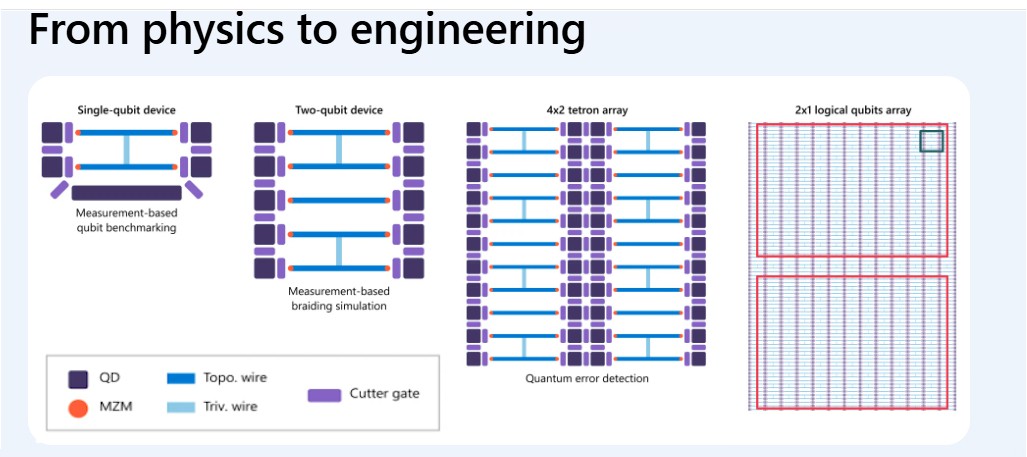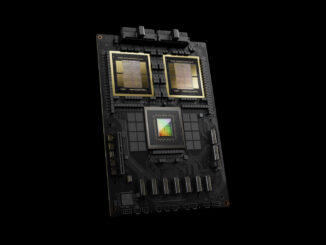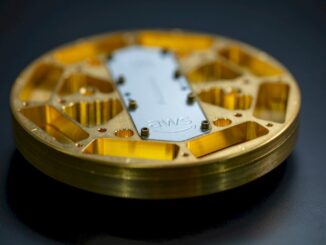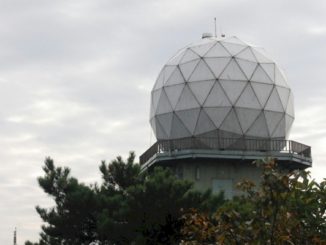
As if you don’t have enough to do with the AI revolution, Microsoft says that 2025 is also the year that organizations need to begin getting ready for quantum computing.
Mitra Azizirad, president and chief operating officer of strategic missions and technologies for the IT and AI giant, wrote that the world was at the “advent of the reliable quantum computing era,” adding that “as our industry looks toward the next twelve months, the pace of quantum research and development is only going to accelerate, making this a critical and catalyzing time for business leaders to act.”
Microsoft executives this week backed up their beliefs, introducing a new chip based on a quasiparticle – Majorana – and a new state of material – topological superconductivity – that both had been theoretical until now, they said.
The result, which you can read about in this paper, is Majorana 1, a quantum chip that comes with a new Topological Core infrastructure, described in an article in Nature, that Microsoft says harkens the arrival of reliable, fault-tolerant quantum computers in years rather than decades.
“A million-qubit quantum computer isn’t just a milestone – it’s a gateway to solving some of the world’s most difficult problems,” wrote Chetan Nayak, Technical Fellow and corporate vice president of quantum hardware, in the Nature article. “Even today’s most powerful supercomputers cannot accurately predict the quantum processes that determine the properties of the materials essential to our future. But quantum computing at this scale could lead to innovations like self-healing materials that repair cracks in bridges, sustainable agriculture, and safer chemical discovery. What today requires billions of dollars in exhaustive experimental searches and wet-lab experiments could be found, instead, through calculation on a quantum computer.”
Microsoft’s boast adds to the hot debate in the industry about the timeframe for when useful quantum systems will arrive. Google – which in December announced Willow, its latest quantum chip that its scientists said solved a decades-old error correction problem – said commercial quantum applications are five years away, while IBM is predicting “quantum-centric supercomputers” by 2033. Meanwhile, Nvidia chief executive officer Jensen Huang, whose GPUs are riding high on the AI wave, believes practical quantum systems are at least two decades in the future.
In the middle of all this, as we reported, D-Wave is moving forward with its annealing quantum computing efforts, selling an Advantage system to a HPC center in Germany and kicking off a business for selling its quantum computers – which until now had been available via the company’s Leap cloud – and offering incentives to companies that want to move from the gate-model quantum technologies that most other vendors are pursuing to D-Wave systems.
Regardless, billions of dollars are being poured into a quantum computing market that likely will come sometime in the not-too-distant future, and Microsoft says the introduction of Majorana 1 will hasten that moment. Company scientists have been pursuing the elusive Majorana quasiparticle for 17 years. Now having corralled it, Nayak is predicting that Majorana 1 will be able to scale to more than a million qubits on a single chip.
A key step in the development of Majorana 1 and the Topological Core infrastructure was in using a combination of indium arsenide – as semiconductor – and aluminum – a superconductor – that Nayak wrote that “when cooled to near absolute zero and tuned with magnetic fields, these [gate-defined] devices form topological superconducting nanowires with Majorana Zero Modes (MZMs) at the wires’ ends.”
“MZMs are the building blocks of our qubits, storing quantum information through ‘parity’ – whether the wire contains an even or odd number of electrons,” he wrote. “In conventional superconductors, electrons bind into Cooper pairs and move without resistance. Any unpaired electron can be detected because its presence requires extra energy. Our topoconductors are different: here, an unpaired electron is shared between a pair of MZMs, making it invisible to the environment. This unique property protects the quantum information.”
He added that the quasiparticles, which for almost a century had been only a theory, can now be created and controlled on demand in the topoconductors, making them ideal for qubits, but raising the problem of reading such well-hidden quantum information.
To solve this, Microsoft created digital switches that couple both ends of the nanowire to a tiny semiconductor – a “quantum dot” – that can store electrical charge. The connection improves the dot’s ability to hold a charge, with the exact increase depending on the parity of the nanowire. Microsoft measures the change using microwave, Nayak wrote, adding that “the dot’s ability to hold charge determines how the microwaves reflect off the quantum dot. As a result, they return carrying an imprint of the nanowire’s quantum state.”
The devices can measure the changes in a single shot, with an error probability of 1 percent, though he wrote that there are ways to reduce that. Microsoft’s system also is stable, particularly compared to Cooper pairs, which can break when exposed to external energy like electromagnetic radiation and become unpaired electrons that can shift the qubit’s state from even to odd parity. However, shielding that Microsoft put around its processor can keep radiation out, with test results showing that such a break with its qubits rarely, at an average of once per millisecond. The company’s scientists should also be able to reduce that number, he wrote.
Microsoft’s work also created a different way that measurements are used in quantum computing to perform calculations. Traditionally, quantum computing requires complex analog control signals customized for each qubit as quantum states are rotated through precise angles. This makes quantum error correction (QEC) difficult because detecting and correcting errors need to rely on the same precise operations.
Nayak said Microsoft uses a measurement-based approach simplifies error correction.
“We perform error correction entirely through measurements activated by simple digital pulses that connect and disconnect quantum dots from nanowires,” he wrote. “This digital control makes it practical to manage the large numbers of qubits needed for real-world applications.”
Along with introducing Majorana 1, Microsoft also is laying out a roadmap to push its fault-tolerant quantum computing initiative and scalable QEC, starting with the development of a single-qubit device called a tetron and then building it out, next to a two-qubit device, a 4×2 tetron array, and then onward to a 27×13 array.
It builds on a roadmap that Microsoft rolled out in 2023. The demonstration of the first topological qubit was the second milestone, he wrote.

Microsoft and PsiQuantum to participate in a benchmarking program called the Validation and Co-Design stage of the Underexplored Systems for Utility-Scale Quantum Computing (US2QC) program, one of two in DARPA’s larger Quantum Benchmarking Initiative. Nayak said the selection validates Microsoft’s work and roadmap.
“DARPA and Microsoft have executed an agreement to begin the final phase of the program,” he wrote. “During this phase, Microsoft intends to build a fault-tolerant prototype based on topological qubits in years, not decades – a crucial acceleration step toward utility-scale quantum computing.”








Hmmm…I bet there is someplace dedicated to taking bets on the order of appearance of items in the “21st Century STEM Trifecta”. Useful/practical: (fusion, AGI, quantum computing).
…My 1st paycheck job at age 16 was working at the 1-mile thoroughbred racetrack next to my neighborhood in Maryland, and no, I wasn’t good at picking the winners of those races either.
Wow! Successfully designing a topological quantum computer out of non-intersecting topologically-stable (protected) Bogoliubov spin-½ non-abelian anyon (any-on: its own antiparticle) braid logic gates in 2D+1 spacetime is quite the punky reggae party — mosh pit collapsed wavefunction and all!
I tried adjusting my hairdo accordingly but the 2-D constraints made me look like a Flatland version of Bob Marley … way too square for a quantum rastafari! 8^b
(it’s majoruana, right?)
I reckon this topological machine is quite impressive indeed! Some of its competition may come from Photonic’s recently developed Quantum Low-Density Parity Check (QLDPC) codes of the Subsystem Hypergraph Product Simplex (SHYPS) family — they claim physical qubit herd size reductions of 5x to 20x per logical qubit: https://photonic.com/news/shyps-codes-announcement/
Hopefully that keeps them as tender as genuinely massaged Kobe beef though (none of that leather-tough shoe-sole steak for me please! eh-eh-eh).
Quantum gravity is not a problem anymore. There’s a displacement gravity, my physics formula for displacements. That is used to solve this issue. With Merlin AI assistance, I have the designed modelling of the correction and maintenance of noise destruction quantum bits core.
It’s in my Bachelor of Computer and Electrical Engineering Honours Thesis Book. Discussion with Merlin.